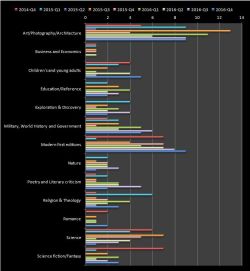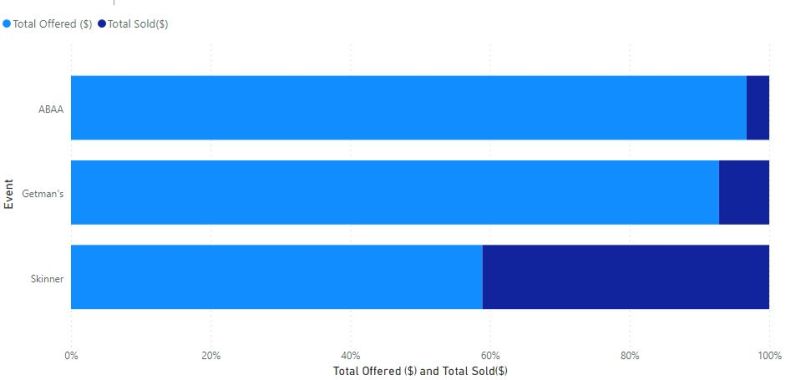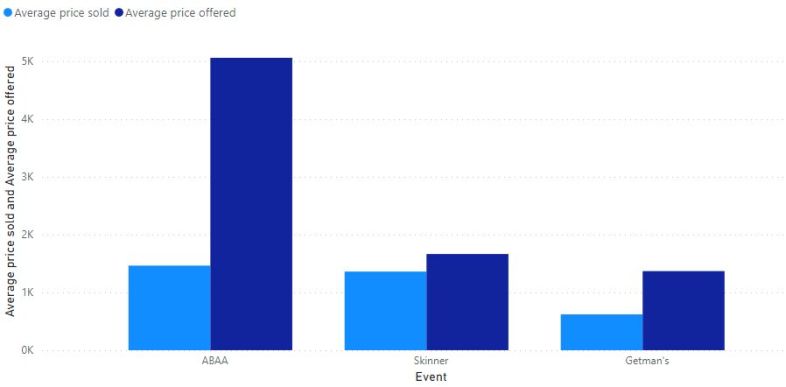 Recently, book collectors, book dealers, auctioneers and book trade organizers, connected in three virtual spaces for the annual Rare Book Week, which usually take place in the month of November, in Boston. The new virtual platform settings had the obvious benefits of enhanced reach, scalability and cost-effectiveness, for the organizers, and the potential of boosting their return on investment. Less obvious were the effects on both the buyers and the sellers. On the surface, sellers should have benefited from a more global reach, while buyers could have found it easier to search and compare prices. However, an obvious drawback for the buyer in a virtual event is the lack of hands-on assessment of the condition of a potential purchase.
Recently, book collectors, book dealers, auctioneers and book trade organizers, connected in three virtual spaces for the annual Rare Book Week, which usually take place in the month of November, in Boston. The new virtual platform settings had the obvious benefits of enhanced reach, scalability and cost-effectiveness, for the organizers, and the potential of boosting their return on investment. Less obvious were the effects on both the buyers and the sellers. On the surface, sellers should have benefited from a more global reach, while buyers could have found it easier to search and compare prices. However, an obvious drawback for the buyer in a virtual event is the lack of hands-on assessment of the condition of a potential purchase.
Our Rare Books Sale Monitor, (stay tuned for the Virtual RBSM coming soon), tracked the activity of all three of these events and collected the insightful data presented below. Please note that the figures do not include the 25% buyer premium assessed at the Skinner auction or any dealer discounts offered during transactions.
ABAA:
Number of dealers participating: 183 exhibiting a maximum of 60 items each.
Most expensive item listed: “An Unmatchable Collection” by Dumas, Alexandre. $525,000 .
Most items priced at: $750 .
Most copies of single title available for sale: (4) “To Kill a Mockingbird” by Lee Harper.
Most expensive item sold, $45,000 paid for: “Declaration of Rights of the Women of the United States by the National Woman Suffrage Association” by Anthony Susan B. Lucretia Mott Elizabeth Cady Stanton et al.
Least expensive item sold, $25 paid for: “Having A Baby Can Be A Scream” by Rivers, Joan.
Most of the items sold at: $250.
Most copies of single title sold : (2) “Le Livre des mortes” Prinner, Anton (illustrator).
Getman’s:
Number of dealers participating: 232 exhibiting a maximum of 21 item each.
Most expensive item listed: Dickens Charles. A Christmas Carol. A presentation copy to a German wine merchant. $108,000.
Most items priced at: $250.
Most copies of single title available for sale : (3) “Typed Letter Signed as President” .
Most expensive item sold, $20,000 paid for: “When We Were Very Young (INSCRIBED); Winnie-the-Pooh; Now We Are Six; The House at Pooh Corner” by Milne A.A.
Least expensive item sold: “A Northern Christmas” by Kent Rockwell. $20.
Most of the items sold at: $250.
Most copies of single title sold : (3) “Typed Letter Signed as President” .
Skinner auction:
Number of items sold above the high estimate: 137.
Most expensive item listed: “Edward Steichen’s Personal Set of Camera Work Vol. 1-50.” by Stieglitz, Alfred $425,000.
Most items priced at: $400 .
Most copies of single title available for sale (2): “Dessins et Peintures d’Asie.” by Iacovleff Alexandre .
Most expensive item sold: “Edward Steichen’s Personal Set of Camera Work Vol. 1-50.” by Stieglitz, Alfred. $125,000.
Least expensive item sold, $10 paid for: Multiple. 3 items total.
Most of the items sold at: $150.
Most copies of single title sold (2): “Dessins et Peintures d’Asie.” by Iacovleff Alexandre.
After combing through data from these three sources, we found some assumptions about virtual shows need refining. In particular, the majority of dealers did not make enough sales during the show to breakeven since the top 15% of the sellers account for more than 60% of total revenue. However, dealer costs are significantly lower compared to the expenses associated with brick-and-mortar shows, since costs such as commuting, hotel accommodations, window display rentals are not applicable. In addition, exhibiting at a show may lead to sales outside the fair, which we were not recorded as book fair sales. Despite the expense, we suspect that post Covid-19, in-person trade shows, likely will bounce back because they are seen as efficient ways to meet potential buyers, recruit business and keep track of competitors.
Buyers, on the other hand, who participate in virtual events, are less localized, than those attending in-person book fairs. Estimates of permanent change in the antiquarian book industry due to a reduction in the number of people willing to fly are exaggerated. While a small fraction of the buyers fly in for a show, it is small enough to have a significant impact. In fact, attendees can be more likely to ask questions and engage with exhibitors virtually than they do in person.
Thankfully, the vaccines seem promising. In 12 months the world could be somewhat normal again. Perhaps anyone who thought they would not attend a show again says, ‘Yes, I’m going to go to a book fair. I miss the smell of a vintage book or the thrill of examining a rare book up close…” In the future, we are more likely to see organizers develop hybrid events where exhibitors display in-person while offering a concurrent on-line presence.



{ 1 comment… read it below or add one }
Last week’s ABAA California Virtual Book Fair did much better than the corresponding Boston event:
ABAA event offered (#, total price, avg. price) sold(#, total price, avg. price)
Boston: 6,807 $34,447,990 $5,061 789 $1,155,450 $1,464
California: 9,326 $59,228,930 $6,350 1,264 $2,420,513 $1,915
{ 3 trackbacks }